Just because we can eat a particular food doesn’t mean that a Chihuahua can.
Many common foods that are perfectly safe for us to consume can cause severe illness in a Chihuahua. We’ve all heard that chocolate is toxic to dogs, but you might be surprised to learn what other foods are on the list.
Alcohol
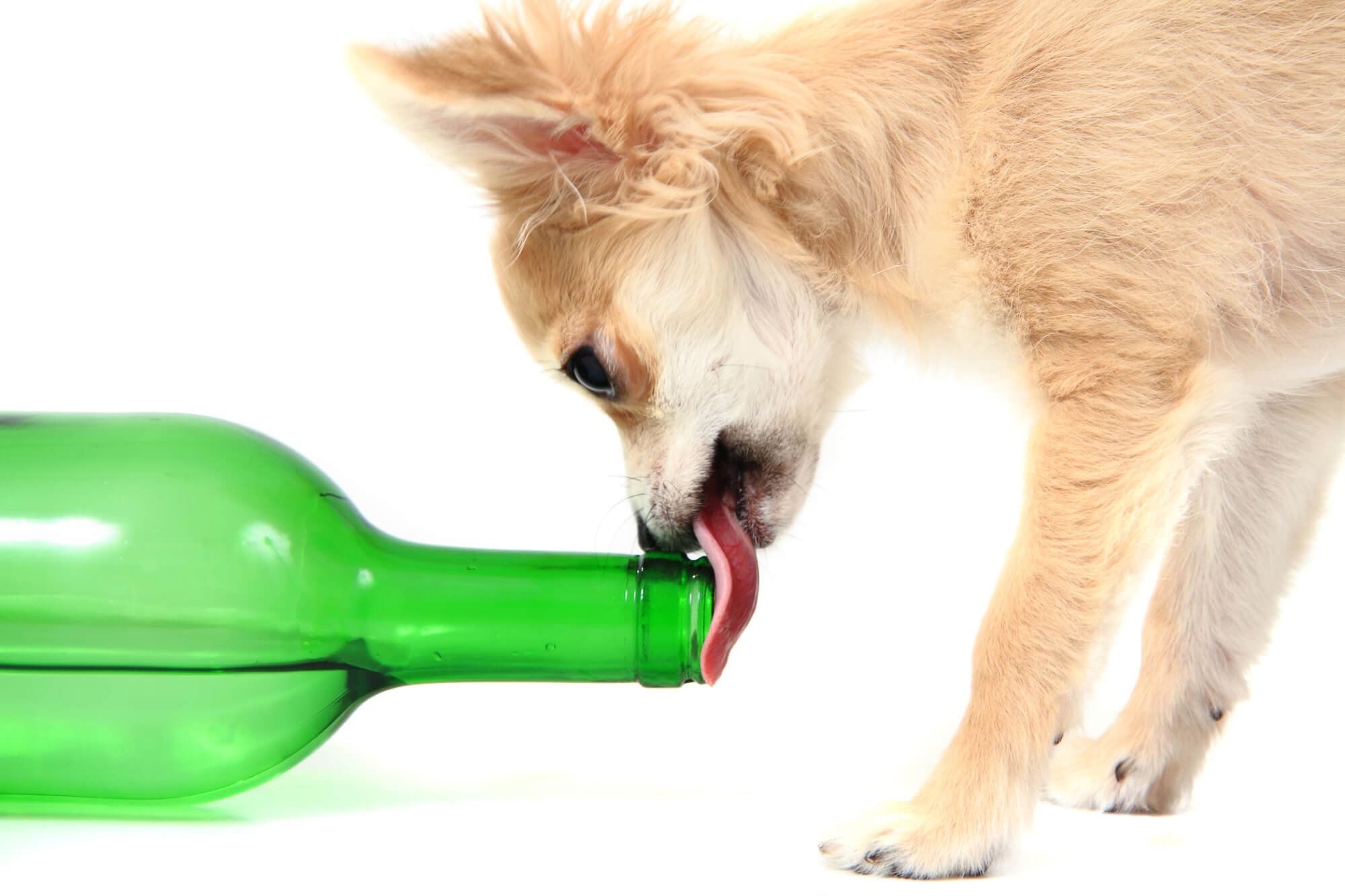 Alcohol (ethanol) is highly toxic to dogs. It depresses the central nervous system and respiratory system while damaging the heart, kidneys and liver.
Alcohol (ethanol) is highly toxic to dogs. It depresses the central nervous system and respiratory system while damaging the heart, kidneys and liver.
Symptoms of alcohol poisoning include vomiting, lethargy, weakness, loss of motor skills, dehydration, respiratory depression, difficulty breathing, excessive and/or involuntary urination, panting, hypothermia, hypoglycemia (low blood sugar) and abdominal pain. In severe cases, seizures, coma, metabolic acidosis and death may occur. Symptoms usually appear within 30 to 45 minutes of exposure.
A lethal dose of alcohol varies depending on the Chihuahua’s weight, symptoms, and the type and quantity of alcohol consumed. Beer typically has lowest concentration of alcohol at 4 to 6% ABV, while wine has a higher concentration at 9 to 16% ABV. Liquor is the most dangerous, however, with some varieties containing up to 80% ABV. Just a few sips of high-proof liquor can be fatal to a small Chihuahua, so keep your cocktails out of Fido’s reach.
According to emergency critical care veterinary specialist Justine A. Lee, DVM, DACVECC, most cases of canine alcohol poisonings don’t involve beer, wine or liquor, but rather the consumption of foods with alcohol, such as rum-soaked cakes and unbaked bread dough. A dog is more likely to eat a full cake or lump of bread dough than drink an entire alcoholic beverage.
In addition to beer, wine and liquor, the following may also contain alcohol or compounds that convert to alcohol:
- Fermented fruit
- Fermented juice and soda
- Unbaked bread dough
- Energy drinks
- Vanilla, rum and almond extracts
- Non-stick cooking spray
- Fondues
- Mouthwash
- Sugarless gum
- Hand sanitizer
- Anti-bacterial soap
- Medication
- Vitamins
Caffeine
 Coffee is one of the world’s most popular beverages, with roughly 83% of the United States adult population consuming it on a daily basis. But if your day begins with a hot cup of Joe, you should keep it away from your Chihuahua.
Coffee is one of the world’s most popular beverages, with roughly 83% of the United States adult population consuming it on a daily basis. But if your day begins with a hot cup of Joe, you should keep it away from your Chihuahua.
Coffee — along with other common foods and beverages (see below) — contains the crystalline purine stimulant caffeine, which is toxic to dogs. Unlike humans, our canine companions cannot effectively metabolize caffeine, leading to heightened effects of the substance.
Symptoms of caffeine poisoning include hyperactivity, excitement, dehydration, panting, shaking, hyperthermia, increased salivation, vomiting and tremors. In severe cases, seizures and death may occur. Symptoms usually appear within 1 to 2 hours of exposure.
Caffeine is lethal to Chihuahuas at a dose of 75 mg per pound of body weight. If your Chihuahua weighs five pounds, for instance, ingesting 375 mg of caffeine can be fatal. If your Chihuahua weighs three pounds, just 225 mg can be fatal.
Caffeinated foods and beverages include:
- Coffee (8 oz = 100 to 150 mg caffeine) *cold brew coffee has more caffeine than hot brew coffee.
- Coffee grounds (12 grams = 120 mg caffeine)
- Espresso (1 oz = 64 mg caffeine)
- Teabags (1 bag = 30 to 70 mg caffeine)
- Black tea (8 oz = 30 to 60 mg caffeine)
- Chocolate (4 oz = 30 to 50 mg caffeine)
- Green tea (8 oz = 25 to 45 mg caffeine)
- Decaff coffee (8 oz = 2 to 12 mg caffeine) *the FDA currently requires 97% of caffeine to be removed from decaff coffee.
- Caffeinated soda (12 oz = 23 to 69 mg caffeine) *diet soda typically contains more caffeine than regular soda.
- Ice cream (4 oz = 0 to 45 mg caffeine)
- Protein bars (1 bar = 0 to 50 mg caffeine)
Chocolate
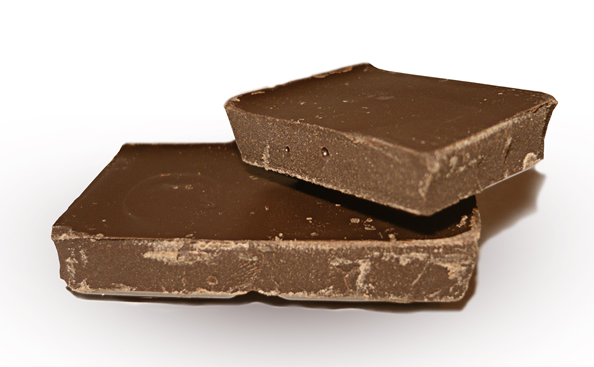
According to its website, the Pet Poison Helpline receives more calls about chocolate poisoning in dogs than any other food or substance. Chocolate contains two methylxanthine substances that are toxic to dogs: caffeine and theobromine, the latter of which is particularly harmful to man’s best friend.
Formerly known as xantheose, theobromine is the primary alkaloid found in cocoa and chocolate. When ingested by a Chihuahua, it triggers the release of norepinephrine and epinephrine, which in turn leads to cardiovascular problems like increased heart rate and arrhythmias. Dogs metabolize theobromine more slowly than humans, so while a chocolate bar is a perfectly safe snack for us, it can be a fatal to a small Chihuahua.
Symptoms of chocolate poisoning include hyperactivity, excitement, vomiting, diarrhea, rapid breathing, increased heart rate, excessive urination, tremors, increased thirst, panting and low blood pressure. In severe cases, coma, cardiac failure, seizures and death may occur. Symptoms are usually visible within 6 to 12 hours of exposure.
Theobromine is lethal to Chihuahuas at a dose of 100 mg per pound of body weight. If your Chihuahua weighs five pounds, for instance, ingesting 500 mg of theobromine can be fatal. If your Chihuahua weighs three pounds, just 300 mg can be fatal.
Foods with theobromine include:
- Cocoa beans (1 oz = 300 to 1500 mg theobromine)
- Dry, unsweetened cocoa powder (1 oz = 700 to 800 mg theobromine)
- Dark chocolate (1 oz = 135 mg theobromine)
- Powdered hot chocolate mix (1 pack = 90 mg theobromine)
- Milk chocolate (1 oz = 60 mg theobromine)
- White chocolate (1 oz = 0.25 to 0.50 mg theobromine)
Some Fruit Seeds, Pits and Cores
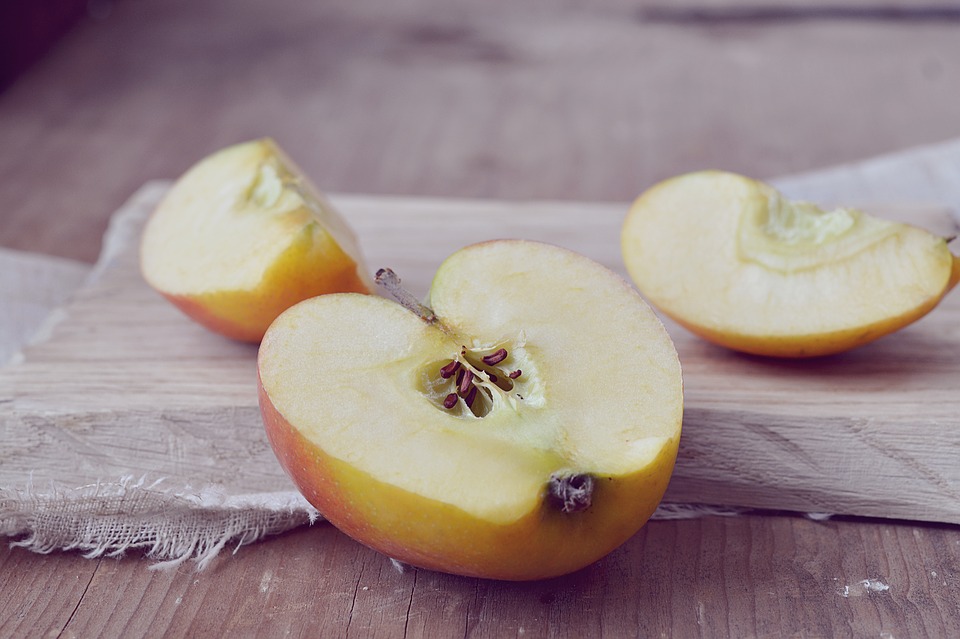 The seeds, cores and pits of certain fruits contain cyanide, which is highly toxic to dogs. This includes apricot pits, apple seeds, cherry seeds, peach pits, plum pits, nectarine pits and apricot pits. The fleshy part of the fruit itself is typically safe; it’s the seeds and pits that owners must keep away from their Chihuahuas.
The seeds, cores and pits of certain fruits contain cyanide, which is highly toxic to dogs. This includes apricot pits, apple seeds, cherry seeds, peach pits, plum pits, nectarine pits and apricot pits. The fleshy part of the fruit itself is typically safe; it’s the seeds and pits that owners must keep away from their Chihuahuas.
There are many forms of cyanide, including hydrogen cyanide (HCN), cyanogen chloride (CNCl), sodium cyanide (NaCN) and or potassium cyanide (KCN). They all work by preventing cells in the body from using oxygen. And without oxygen, these otherwise healthy cells die.
Symptoms of cyanide poisoning include weakness, lethargy, vomiting, diarrhea, tremors, hyperventilation, skin redness, drooling and panting. In severe cardiac arrest, coma and death may occur. Symptoms may appear within minutes or hours of exposure.
A lethal dose of cyanide varies depending on the Chihuahua’s weight, the type and amount of fruit pit or seeds ingested, whether the seeds were broken or whole, and other factors. If your Chihuahua has consumed any amount of the fruit seeds or pits listed above, contact an emergency pet poisoning center (instructions at bottom of this article). According to Vetary, blood samples reading 3 mcg/mL or higher of cyanide require immediate veterinary attention.
Garlic

While often touted as a homeopathic treatment for fleas, garlic and other plants in the Allium family (see below) are highly toxic to dogs. Whether raw, cooked or powdered, garlic and foods containing garlic should be kept out of your Chihuahua’s reach.
Garlic contains a substance called thiosulfate, which dogs lack the necessary enzyme to digest, as well as a variety of organosulfer compounds that give garlic its distinct odor. When ingested by a Chihuahua, these organosulfer compounds are metabolized into oxidative compounds that destroys red blood cells in a condition known as Heinz Body Anemia.
Symptoms of garlic poisoning include vomiting, diarrhea, excessive salivation, pale gums, dark urine, lethargy, weakness, increased heart rate, excessive and/or involuntary urination. In severe cases, seizure, collapse and death may occur. Symptoms are usually visible within 24 to 72 hours of exposure.
Garlic is lethal to Chihuahuas at a dose of 10 grams per pound of body weight. If your Chihuahua weighs five pounds, for instance, ingesting 50 grams of garlic can be fatal. If your Chihuahua weighs three pounds, just 30 grams can be fatal.
Allium plants that your Chihuahua shouldn’t eat include:
- Garlic
- Onions
- Shallots
- Chives
- Leeks
- Scallions
Grapes and Raisins
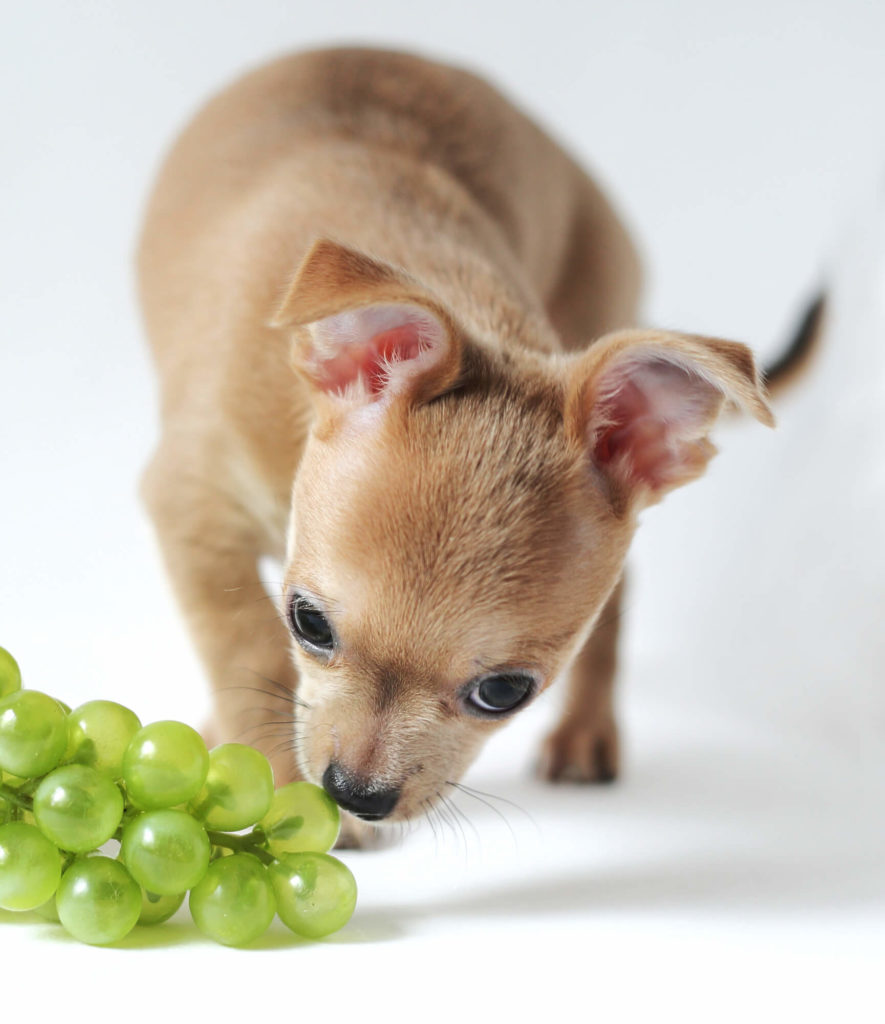 Grapes and raisins are highly toxic to dogs, with emergency veterinarian clinics in the United States treating hundreds of cases each year. When ingested, they can damage the kidneys, leading to acute kidney failure.
Grapes and raisins are highly toxic to dogs, with emergency veterinarian clinics in the United States treating hundreds of cases each year. When ingested, they can damage the kidneys, leading to acute kidney failure.
The exact compound responsible for the toxicity of grapes and raisins in dogs remains unknown. However, some researchers theorize that a mycotoxin (toxin produced by a fungus) is the culprit. Another theory, explored in this Mercola article, points to a fluoride-based pesticide known as cryolite, which is certainly plausible considering that not all dogs fall ill after ingesting grapes. The Environmental Working Group (EWG) also ranked grapes at #5 on their list of the most pesticide-contaminated fruits and vegetables of 2015, further reinforcing this theory. Regardless of what compound causes its toxicity, keep grapes and raisins away from your Chihuahua.
Symptoms of grape or raisin poisoning include vomiting, diarrhea, dehydration, mouth ulcers, excessive thirst, lethargy, abdominal pain, trouble urinating, bad breath and tremors. In severe cases, seizures, coma and death may occur. Symptoms are usually visible within 1-3 hours of exposure, with acute kidney failure developing several days after exposure.
Grapes are lethal to Chihuahuas at a dose of 14 grams per pound of body weight. If your Chihuahua weighs five pounds, for instance, ingesting 70 grams of grapes can be fatal. If your Chihuahua weighs three pounds, just 42 grams can be fatal.
Raisins are lethal to Chihuahuas at a dose of 5 to 14 grams per pound of body weight. If your Chihuahua weighs five pounds, for instance, ingesting 25 to 70 grams of grapes can be fatal. If your Chihuahua weighs three pounds, just 15 to 42 grams can be fatal. To put those numbers into perspective, a one-cup serving of grapes is about 92 grams, which is more than enough to cause fatal reactions in a small Chihuahua.
Hops
 Hops — flowers of the Humulus lupulus plant — is a primary flavoring agent and stabilizer used in brewing beer. Whether raw, dry, spent or pellets, homebrewers should store hops out of their Chihuahua’s reach. Chihuahuas that ingest hops may experience a wide range of adverse symptoms, the most concerning being Malignant Hyperthermia (MH), a condition in which the body temperature rapidly rises to dangerous levels.
Hops — flowers of the Humulus lupulus plant — is a primary flavoring agent and stabilizer used in brewing beer. Whether raw, dry, spent or pellets, homebrewers should store hops out of their Chihuahua’s reach. Chihuahuas that ingest hops may experience a wide range of adverse symptoms, the most concerning being Malignant Hyperthermia (MH), a condition in which the body temperature rapidly rises to dangerous levels.
In 1995, the National Animal Poison Control Center, the University of Illinois in Urbana conducted a study of hop poisoning in dogs. Researchers found hop poisoning to be fatal in all eight dogs examined. With that said, not all cases are fatal. There are many reports on homebrewing forums of dogs fully recovering after ingesting hops.
It’s unknown what compound or compounds makes hops toxic to dogs. Some experts believe it’s the natural resins within hops, while others believe it’s the phenolic compounds or nitrogenous constitutes.
Symptoms of hop poisoning include rapid breathing, increased heart rate, panting, vomiting, anxiety, hyperactivity, abdominal pain and hyperthermia, In severe cases, seizures, coma and death may occur. Symptoms are usually visible within 30 minutes to 8 hours of exposure.
A lethal dosage of hops varies depending on the type of hops ingested (dried plugs typically more toxic), the Chihuahua’s weight, and how he reacts to it. However, ingestion of even small amounts can be fatal to Chihuahuas.
Onions

Like its garlic counterpart, onions contain a substance called thiosulfate, which dogs lack the necessary enzyme to digest. Onions also contain organosulfer compounds, which are metabolized into oxidative compounds that attack red blood cells in a condition known as Heinz Body Anemia.
Symptoms of onion poisoning include vomiting, diarrhea, excessive salivation, pale gums, dark-colored urine, lethargy, weakness, increased heart rate, excessive and/or involuntary urination. In severe cases, seizure, collapse and death may occur. Symptoms are usually visible within 24 to 72 hours of exposure.
Onions are lethal to Chihuahuas at a dose of 30 to 60 grams per pound of body weight. If your Chihuahua weighs five pounds, for instance, ingesting 150 to 300 grams of onion can be fatal. If your Chihuahua weighs three pounds, just 90 to 160 grams can be fatal.
Macadamia Nuts
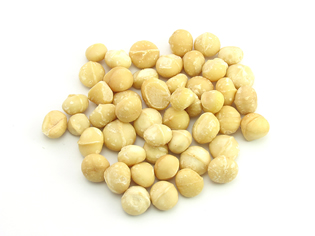
While most nuts are non-toxic to Chihuahuas, macadamia nuts are the exception. They contain an unknown compound that is toxic to dogs. The good news is that most cases of macadamia nut poisonings are mild, with dogs typically recovering within 48 hours. Depending on the amount of nuts consumed, however, veterinary attention may be required. Dogs are the only species in which adverse symptoms from macadamia nuts have been reported.
Symptoms of macadamia nut poisoning include weakness, lethargy, vomiting, hyperglycemia, tremors, increased heart rate and ataxia. In severe cases, collapse and death may occur. Symptoms are usually visible within 2-12 hours of exposure.
Macadamia nuts are rarely lethal to Chihuahuas, though symptoms have been reported at doses of 4.8 to 62.4 grams of nuts per pound of body weight. If your Chihuahua weighs five pounds, for instance, ingesting 24 to 312 grams of macadamia nuts may cause symptoms to manifest. If your Chihuahua weighs three pounds, just 14.4 to 187.2 grams can cause symptoms to manifest.
Nutmeg
 Nutmeg is a culinary spice derived from the tropical evergreen tree Myristica in Asia and the western Pacific. It’s used as a flavoring agent in many dishes, including cookies, cakes, eggnog, soups, custards, sauces and more. While humans can safely consume low-to-moderate doses of nutmeg without any ill effect, dogs cannot.
Nutmeg is a culinary spice derived from the tropical evergreen tree Myristica in Asia and the western Pacific. It’s used as a flavoring agent in many dishes, including cookies, cakes, eggnog, soups, custards, sauces and more. While humans can safely consume low-to-moderate doses of nutmeg without any ill effect, dogs cannot.
Nutmeg contains the neurotoxin myristicin, to which Chihuahuas and other dogs are highly sensitive. Nutmeg (raw and powdered), as well as foods, flavoring agents and other products containing the spice should be kept out of your Chihuahua’s reach.
Symptoms of nutmeg poisoning include increased heart rate, high blood pressure, diarrhea, dry mouth, abdominal pain and lethargy. In severe cases, hallucinations, seizures and death may occur. Symptoms are usually visible within 1 to 3 hours and may last for up to 48 hours.
There’s limited information regarding how much nutmeg is lethal to Chihuahuas. Some sources claim one tablespoon is the average dose at which nutmeg presents lethal reactions, while others claim is little as 2 grams can trigger life-threatening reactions. For these reasons, it’s best to err on the side of caution by assuming that any amount of nutmeg is potentially fatal.
Xylitol
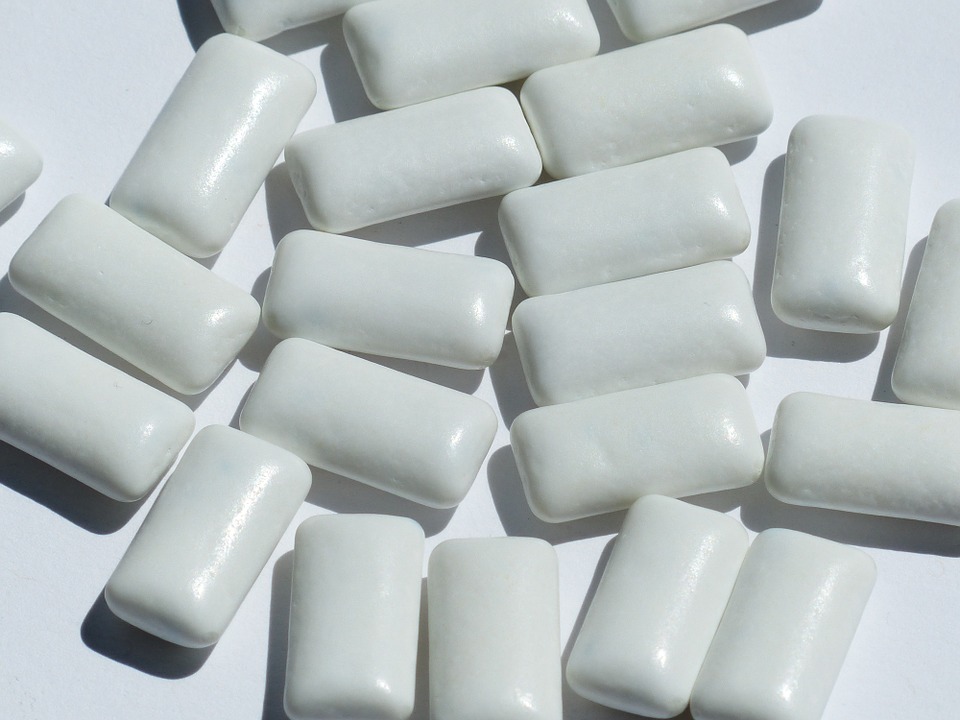 Xylitol is a sugar substitute commonly used in sugar-free gum, mints, candy and peanut butter. It’s often preferred over table sugar because it contains fewer calories and a lower glycemic index than its counterpart. When used in chewing gum, xylitol also protects against cavities by inhibiting bacterial growth and reproduction.
Xylitol is a sugar substitute commonly used in sugar-free gum, mints, candy and peanut butter. It’s often preferred over table sugar because it contains fewer calories and a lower glycemic index than its counterpart. When used in chewing gum, xylitol also protects against cavities by inhibiting bacterial growth and reproduction.
So, why is xylitol toxic to dogs and not us? Xylitol is absorbed more rapidly in dogs, resulting in a dangerous spike of insulin. When this occurs, blood sugar levels to drop to dangerously low levels (hypoglycemia) — a potentially life-threatening condition to which Chihuahuas are already predisposed. In higher doses, xylitol also causes sudden liver failure (acute hepatic necrosis).
Symptoms of xylitol poisoning include weakness, lethargy, vomiting, hypoglycemia (low blood sugar) and jaundice. In severe cases, seizure, collapse, liver failure and death may occur. Symptoms are usually visible within 10 to 30 minutes of exposure.
Xylitol is lethal to Chihuahuas at a dose of 50 mg per pound of body weight. If your Chihuahua weighs five pounds, for instance, ingesting 250 mg of xylitol can be fatal. If your Chihuahua weighs three pounds, just 150 mg can be fatal. To put those numbers into perspective, a single piece of sugar-free gum typically contains 1 gram of xylitol, which is more than enough to cause severe hypoglycemia and possibly death.
Other Foods to Watch
While not as dangerous, the following foods should also be kept away from your Chihuahua.
- Yeast Dough (unbaked bread dough): While baked bread is typically safe for Chihuahuas, unbaked yeast dough contains alcohol, making it toxic to them.
- Cat Food: Dry or wet, cat food is formulated with a higher concentration of protein and fat than dog food, making it harsh on the liver and kidneys.
- Bacon: There’s no treat a Chihuahua wants more than bacon, but the high fat content can lead to obesity and pancreatitis.
- Citrus Fruits: Lemons, limes, oranges and other citrus fruits are highly acidic and may cause digestive problems when consumed by a Chihuahua. Some citrus fruits also contain a toxic compound called psoralen, further contributing to gastrointestinal distress.
- Wild Mushrooms: Store-bought mushrooms are typically safe for Chihuahuas, but many wild varieties are poisonous.
- Unripe Potatoes: Characterized by their green tint, unripe potatoes contain the glycoalkaloid toxin solanine.
- Milk, Cheese and Dairy: While some Chihuahuas can digest milk without ill effect, others experience gas, vomiting and diarrhea.
- Any High-Fat Foods: Fatty foods contribute to pancreatitis, which is a painful condition characterized by inflammation of the pancreas.
- Any Salty Foods: Like us, Chihuahuas need sodium in their diet, but too much can cause sodium ion poisoning.
Help! My Chihuahua Consumed a Toxic Food!
If you suspect your Chihuahua has consumed one of the foods or substances listed above, contact either the ASPCA’s Animal Poison Control Center (APCC) at 1-888-426-4435 or the Pet Poison Helpline at 1-800-213-6680. The APCC charges a $65 consultation fee, while the Pet Poison Helpline charges a $39 consultation fee. Both services are available 24 hours a day, 7 days a week.
When calling the APCC or Pet Poison Helpline, be prepared to tell the operator the following:
- What your Chihuahua consumed (or what you suspect he consumed).
- How much he consumed.
- When he consumed it.
- Symptoms he’s experiencing.
- How much he weighs.
- Any medication or supplements that he is currently taking.
- If your Chihuahua has any known health issues.
Depending on the circumstances, the operator may recommend inducing vomiting. This is typically done by orally administering 3% hydrogen peroxide at a dosage of 1 milliliter (ml) per pound of body weight. Using a syringe or turkey baster, squirt the hydrogen peroxide in the back of your Chihuahua’s mouth. Repeat these steps every 15 to 20 minutes, up to three times, until your Chihuahua vomits.
The APCC offers a free mobile app with detailed information about which foods are toxic to pets, as well as a one-touch button to speed dial its poison control center. You can download the APCC app by clicking the link below.
When Not to Call
If your Chihuahua is exhibiting signs of severe toxicity — seizure, foaming at the mouth, loss of consciousness, coughing up blood or bloody diarrhea — take him to the nearest veterinarian immediately. There’s only so much an operator can do over the phone. In cases such as these, the operator will instruct you to take your Chihuahua to the veterinarian anyway.
Time is of the essence when treating poisonings in Chihuahuas, so act fast to increase his chance of a full recovery.
References:
https://www.akc.org/expert-advice/health/what-to-do-if-your-dog-ate-chocolate/
https://www.aspca.org/pet-care/animal-poison-control
http://www.aspca.org/pet-care/animal-poison-control/people-foods-avoid-feeding-your-pets